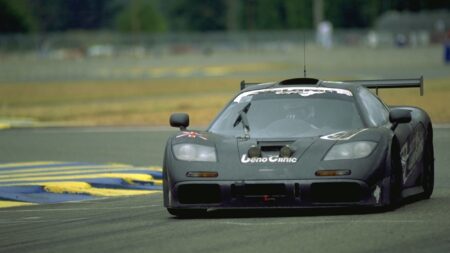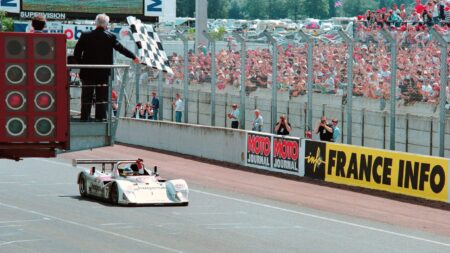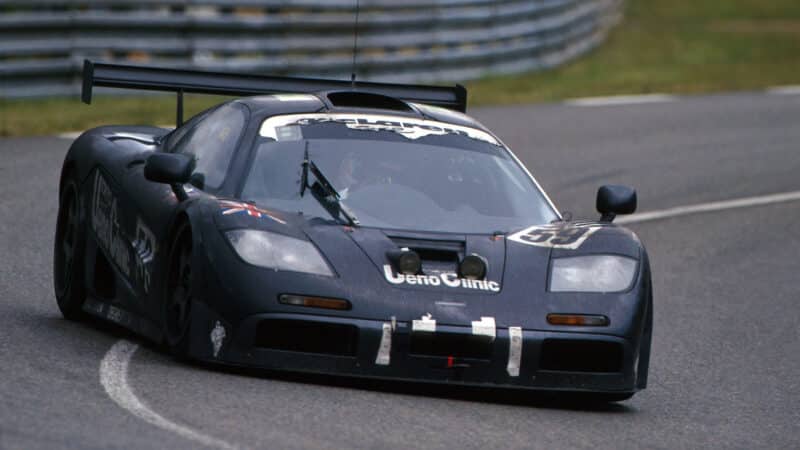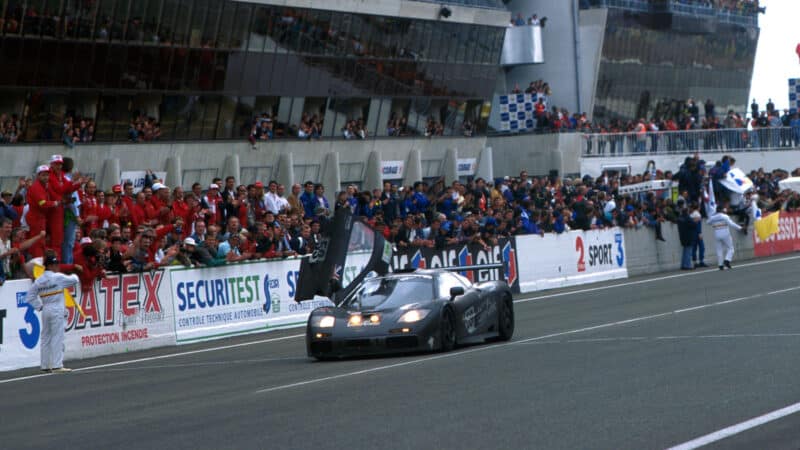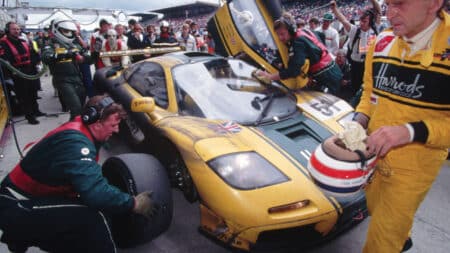Despite the successful test, none of the teams running McLarens believed they could make it through Le Mans without problems. “The gearbox had been a bit of a saga all season and there were still worries about it as we left for Le Mans,” says Dave Price, whose eponymous team was running a pair of cars with Harrods and West sponsorship. “To be quite honest, no one expected the ‘box to last.”
Those expectations changed the moment rain began to fall during the opening hour. The skies suggested the inclement conditions were set for the duration, and that proved to be the case. Only when the race was more than three-quarters done could it be described as truly dry.
The conditions not only put less stress on the McLarens’ transmissions, but also closed the performance gap to the prototypes. The best McLaren time, set by Lehto in the Japanese-funded Kokusai Kaihatso car, was a full 11 seconds from the pole-winning WR-Peugeot and, more significantly, 8.5sec behind the much-fancied Courage-Porsche driven by Mario Andretti, Bob Wollek and Eric Hélary. Yet a McLaren led before the end of the opening hour.
And that’s the way it would stay, after the pole-winning Welter Racing prototype had a brief return to the top, for the rest of the race. John Nielsen was first to hit the front in David Price Racing’s West-liveried car, despite the failure of a windscreen wiper. The Dane brought all his experience into play to lead at the top of each hour from 7pm until clutch problems intervened shortly before half distance.
Troubles for one DPR car allowed the team’s second entry to take up the running. The Harrods McLaren had lost time early on when Derek Bell, back in a competitive car for the first time since 1988, inadvertently kinked the throttle cable climbing into the car. DPR had prepared the car with a second cable in situ, but two laps were still lost when the switchover was made.
Also making up ground following a cautious start, but still a lap down, was the Kokusai Kaihatso entry run by historic preparation expert Paul Lanzante. The rest, the prototypes included, were nowhere, though the Courage was making progress after Andretti had hit the wall in the Porsche Curves.

The David Price Racing Harrods car which eventually finished third
LAT Images
It was an intriguing battle between a pair of cars that each relied mainly on the talents of just two drivers. Sekiya drove for just five hours in the winning car, while Justin Bell, who joined his father and Andy Wallace in the Harrods McLaren, completed only three stints behind the wheel.
More than once Bell and Lehto, two sportscar legends at opposite ends of their Le Mans careers, went head to head. There were times when the Finn, one year out of Formula One, was lapping 10 sec faster than anyone else on the track, yet twice the 54-year-old veteran got the better of a driver 25 years his junior.
The second occasion came with just four hours to go. The Harrods McLaren had lost its one-lap lead over the Japanese entry when the young gun and the old hand took over their respective mounts within minutes of each other.
“The team told me that JJ was something like 47sec behind,” recalls Derek Bell. “I remember thinking the writing was on the wall, but I put my head down and pulled away from him at half a second per lap.”


